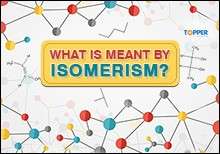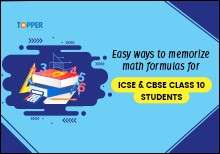Tips to Score a Perfect Centum in Accountancy

Prepare for your Accountancy paper in a better manner by gaining insight on the importance of various chapters
By 27th Feb, 2018 | 04:13 pm
ShareWith the CBSE Class 12 board examinations starting next week, students are working day in and day out to score a desired percentage. It is a common ambition among students to score a perfect centum in Accountancy. This is neither too difficult nor too farfetched.
We will help you to achieve your goal with a little reading you will be going through in this blog post. The first thing that every one of us needs to understand is the question paper design and its contents.
The CBSE Class 12 Accountancy Syllabus has been divided into 3 major sections – Partnership Accounting, Companies Accounts and Analysis of Financial Statements or Computerised Accounting. CBSE has already awarded a definite weightage to each of the individual units so as to ease the preparation strategy of students.
|
Section A: Partnership and Company Accounts |
|
|
Name of the Chapter |
Marks |
|
Ch. 1: Fundamentals of Partnership |
4 |
|
Ch. 2: Change in Profit Sharing Ratio |
4 |
|
Ch. 3: Admission of a Partner |
15 |
|
Ch. 4: Retirement/Death of a Partner |
6 |
|
Ch. 5: Dissolution of a Partnership Firm |
6 |
|
TOTAL |
35 |
|
Ch. 6: Accounting for Share Capital |
15 |
|
Ch. 7: Debentures: Issue and Redemption |
10 |
|
TOTAL |
25 |
|
Section B: Financial Statement Analysis |
|
|
Name of the Chapter |
Marks |
|
Ch. 1: Financial Statements of a Company |
4 |
|
Ch. 2: Analysis of Financial Statements |
4 |
|
Ch. 3: Accounting Ratios |
4 |
|
Ch. 4: Cash Flow Statement |
8 |
|
TOTAL |
20 |
OR
|
Section C: Computerised Accounting |
|
|
Name of the Chapter |
Marks |
|
Ch. 1: Computerised Accounting |
20 |
|
Ch. 2: Accounting Application of Electronic Spreadsheet |
|
|
Ch. 3: Using Computerised Accounting System |
|
|
Ch. 4: Data Base Management System |
|
|
TOTAL |
20 |
A clear indication of chapter-wise marks helps a student gain insight on the importance of various chapters. Not only this, CBSE also describes the pattern of examination paper which further guides us with the typology of questions to expect in the exam paper.
|
Typology |
VSA (1 mark) |
SA I (3 marks) |
SA II (4 marks) |
LA I (6 marks) |
LA II (8 marks) |
Marks |
% |
|
Remembering |
3 |
1 |
1 |
1 |
- |
16 |
20 |
|
Understanding |
2 |
- |
2 |
1 |
1 |
24 |
30 |
|
Application |
- |
2 |
2 |
1 |
- |
20 |
25 |
|
HOTS |
2 |
- |
- |
1 |
1 |
16 |
20 |
|
Evaluation |
1 |
1 |
- |
- |
- |
04 |
5 |
|
|
|
|
|
|
|
|
|
|
Total |
8 ´ 1 = 8 |
4 ´ 3 = 12 |
5 ´ 4 = 20 |
4 ´ 6 = 24 |
2 ´ 8 = 16 |
80 + 20 (Project) |
100 |
Considering the above figures by CBSE, we can say that only 20% of the paper is remembering based. And a good enough 30% is based on understanding of the concepts. The most important thing that makes our paper ‘not easy’ is that 50% of the paper includes Applications, HOTS-type and Evaluation-based questions. And if we compare the trend of typology of questions forming part of our paper, we can easily say that over the years CBSE has inclined towards HOTs-type, Evaluation-based and Application-based questions. This has been done by including value-based questions, case study-type questions and multi-disciplinary questions.
The next important bit in the Accountancy paper is the theory part. The percentage of theory in the exam has certainly been within the range 8–18%. So, you can see that you cannot ignore theory presuming that Accountancy is a practical subject. And for preparing for the theory part, you must never treat theory as a unit which requires special efforts to be made in order to excel. You just need to focus on the correct understanding of related concepts and remember the governing laws and principles of accounting wherever applicable. There is nothing to cram. Just stick to logic and go for it.
The percentage of marks allotted to each chapter gives an idea of the relative importance of each unit forming part of the syllabus. The above trends clearly indicate that minor fluctuations are acceptable. However, unit-wise weightage is kept intact. But why does this happen?
Simply because of long answer questions which would definitely carry an option. This option is normally not from the same chapter. Due to this, the complete distribution of marks is disturbed. To ensure that the paper is not biased towards a particular chapter, the number of short questions from chapters is reduced.
Important Topics
The level of importance of every chapter is based on the weightage that has been assigned to the respective topics forming part of the chapter. We have questions ranging from 1 mark to 8 marks in our paper. The critical point is to understand the relevance of 6 and 8 marks questions and 3 and 4 marks questions.
Starting with the first chapter, questions based on Preparation of Partners’ Capital Account, Calculation of Interest on Drawings, Types of Capital Accounts or Preparation of P&L Appropriation Account are very important considering 3–4 marks questions which form part of our examination paper. However, the 6 marks question is expected only either from Past Adjustments or Guarantee of Profits.
In the next chapter that is Valuation of Goodwill, a question which we expect is related to calculation of goodwill by any of the methods covered in the syllabus. We would recommend that you practise questions where some additional information is also provided.
Moving further, Reconstitution of Partnership, including Admission, Retirement and Death, forms the most important segment of the syllabus.
For short questions in this unit, normally a question related to Preparation of Partner’s Capital Account or Executor’s Loan Account is expected. If you look at Dissolution, a question may be related to Preparation of Realisation Account. Full-fledged questions of 6–8 marks will likely be related to Preparation of Revaluation Account, Partners’ Capital Account and Balance Sheet or Cash Account or may be from Dissolution for Preparing Realisation Accounts with given additional information or may be related to Passing Journal Entries and Preparation of Necessary Ledger Accounts for a firm being dissolved.
In the second part of Section A of the exam, i.e. Company Accounts, we have only two chapters, i.e. Accounting for Share Capital and Issue & Redemption of Debentures, but these come with many concepts which students can be tested on.
You need to prepare for and study the small concepts related to Issue of Shares or Debentures for Consideration Other than Cash, Issue of Debentures with Redemption Terms, Issue of Debentures as Collateral Security or questions related to Disclosure of Particular Heads in the Balance Sheet can also be present. Also, questions on Forfeiture and Re-Issue Entries may be asked for 3–4 marks.
For long answer-type questions, it is for sure that you will get at least one long question each from both chapters. For Share Capital, you will have a full-fledged question related to Forfeiture and Re-Issue which can be asked in any of the two forms. First is where only journal entries for issue, forfeiture and re-issue are to be passed. Second can be on Preparation of Balance Sheet for questions involving Share Forfeiture and Re-Issue with Pro-Rata Allotment.
From Debentures and Redemption of Debentures, the question will be related to Journal Entries to be Passed for Issue and Further Redemption of Debentures by any of the 4 methods of redemption. The second variant of the question which you need to practise can be related to Redemption of Debentures by Combination of Two Methods, like part of debentures are to be redeemed by conversion and remaining by draw of lots.
In Part B of the syllabus, Analysis of Financial Statements which comprises Financial Statements, its Analysis, Accounting Ratios and Cash Flow Statements, you get three questions of 4 marks each from each of the individual chapters and one 6 marks question from Cash Flow Statements along with two small 1 mark questions.
The first chapter related to Financial Statement of Company, you can have a question related to Classification of Items as per the format of financial statements. From the second chapter related to Analysis of Financial Statements, a question based on preparation of common-size statement or comparative statement may be present and it may be related to the Income Statement or the Balance Sheet. From Accounting Ratios, you can expect a question based on computation of any ratio. But generally, a question asked from this chapter is an indirect question which involves multiple ratios from which you need to arrive at some desired results or some required ratio. Also, the question may be situation based where you are required to comment on the effect of various transactions over the given ratio. So, immense practice of this chapter would definitely get us 4 on 4. In the last chapter, Cash Flow Statements, which forms the backbone of Part B, you will get one full-fledged question related to Preparation of Cash Flow Statements including 3–4 additional adjustments. We recommend that you be thorough with Treatment of Adjustments like Fixed Asset Account with Accumulated Depreciation, Proposed Dividend, Interim Dividend, Provision for Tax, Bank Overdraft, Discount on Issue of Debentures etc. so as to score well in this segment.
Some tips to help you excel
a) Plan your studies: A well-drafted plan with clear goals set for each day would help you accomplish the target of good studies and efficient revision. Not only this you have to take all possible steps to effectively execute the plan and rework over the same if something is not happening in our interest.
b) Solve maximum sample papers before the exam: Sample papers provide us with an idea of the type of questions and the pattern of the exam which you are actually going to write in the next few days. It helps you practise and learn time management skills. For CBSE Accountancy sample papers, click here.
c) Go through previous year papers: Previous year papers will help you get an idea of the types of questions which form part of the exam. These papers will help you prepare and analyse the most important concepts. For CBSE Accountancy previous year papers, click here.
d) Refer to books you have already studied from: You must have studied by referring to various books such as those by NCERT, TS Grewal, Tulsian etc. Please continue referring to those books for your preparations and don’t switch to other new books in search of more practice questions.
For TS Grewal Solutions, please click here.
For NCERT Solutions, please click here.
e) Time management: Use the three hours in the best possible manner, and attempt the entire paper with some time left for revision. Use the reading time in the examination hall to get an overall view of the paper and eliminate the choices given in the 8 marker questions. Attempt to complete Section B in 40–45 minutes at the most. Don’t take more than 20 minutes to answer the 8-mark questions.
f) On the exam day: Remember to carry your stationery, admit card and other necessary stuff to avoid unwanted movement and focus entirely on the paper.
We hope this blog post helps you understand something that will definitely help you prepare for your boards in an even better manner. In case of any other academic doubts or queries, click here.
All the Best!
Important Resources
- Education Franchisee opportunity
- NCERT Solution
- CBSE Class 9 Mathematics
- NCERT Solutions for class 10 Science
- Sample Papers
- CBSE Class 9 Science
- NCERT Solutions for class 10 Maths
- Revision Notes
- CBSE Class 10 Hindi
- CBSE Class 10 English
- CBSE Class 10 English
- CBSE Class 10 Social Studies
- CBSE Class 10 Science
- CBSE Class 10 Mathematics
- Career In Science After 10
- Career In Commerce After 10
- Career In Humanities/Arts After 10
- NCERT Solutions for Class 10
- NCERT Solutions for Class 11
- Business Studies Class 12 CBSE project








